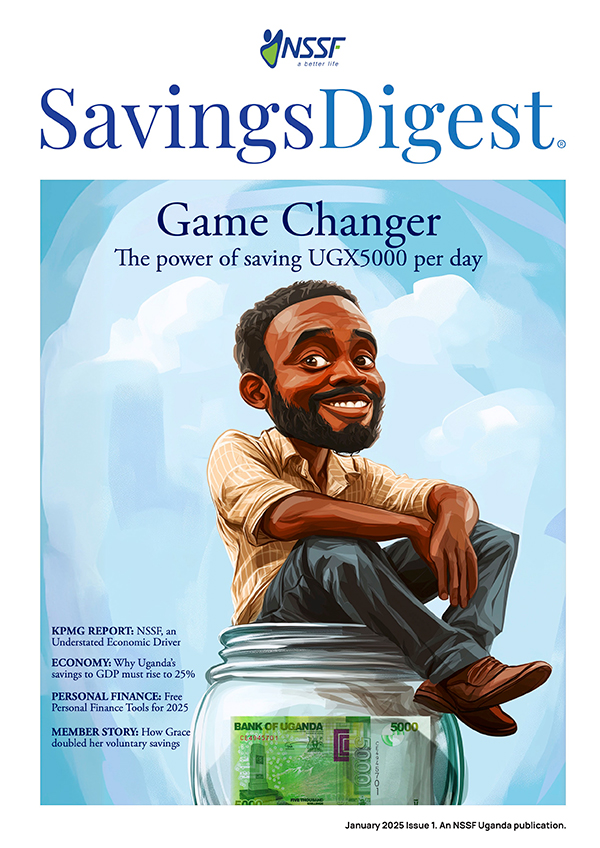Economic Developments and Outlook
Thursday, February 6 2025 1:46 pm
By Josephine Nakitende - Fixed Income Specialist Follow on LinkedIn
Statistics from (UBOS), show that year-on-year GDP growth for Q3 2024 reached 6.7%, up from 5.6% in Q3 2023/24. This improvement was primarily driven by the agriculture sector, which expanded by 8.7% compared to 4.9% in Q3 2023.
Gross Domestic Product
However, on a quarter-on-quarter basis, GDP growth slowed to 2.0% in Q3 2024, down from 2.4% in Q2 2024, largely due to a 1.1% contraction in the services sector. The Bank of Uganda (BoU) projects GDP growth of 6.0%-6.5% for FY 2024/25 and 7.0%-7.5% over the medium term, supported by strategic government initiatives, foreign direct investment (FDI) in extractive industries, and the anticipated commencement of oil production in FY 2025/26. Key risks to this outlook include geopolitical tensions, trade wars, and tighter domestic financial conditions. On the upside, factors such as conflict resolution, favorable weather conditions, and stronger global economic growth could further bolster performance.

Inflation
Inflation rose slightly during the quarter but remained below the central bank’s 5% target. Annual headline inflation increased to 3.3% in December 2024, up from 2.9% in both November and October, and 3.0% in September 2024. Similarly, core inflation edged up to 3.9% in December, compared to 3.8% in November and 3.7% in September. The forecast projects average consumer price growth to rise from 3.3% in 2024 to 4% in 2025, primarily driven by imported inflation fueled by strong demand for capital goods to support the development of the oil sector.

Monetary Policy
The BoU Monetary Policy Committee (MPC) maintained an accommodative stance, lowering the Central Bank Rate (CBR) by 25 bps to 9.75% in October 2024, before holding it steady in December. This easing reflects favorable inflation projections, supported by a strong Uganda shilling, increased capital inflows, favorable commodity prices, and easing global inflation. Despite this, money markets remained tight, with commercial banks heavily reliant on central bank liquidity and rates trending at the upper end of the central bank’s corridor.
The Uganda shilling remained stable, closing at UGX 3,679.3, appreciating 0.8% year-to-date, driven by tight monetary policy, moderated outflows, and increased export revenue, especially from coffee. However, a widening current account deficit could pressure the shilling in early 2025. Strong FDI and monetary policy are expected to moderate depreciation within acceptable limits. Elections in early 2026 may amplify volatility, with sharper depreciation likely, followed by stabilization as speculative pressures ease.

Fixed Income Market
The yield curve steepened during the quarter, with long-term rates rising by 70–100 bps compared to 20–50 bps for short-term rates. Treasury auctions were oversubscribed, with an average bid-to-offer ratio of 1.98 for treasury bills and 1.62 for bonds. Average bond auction yields increased from 16% in September 2024 to 16.6% by the end of the quarter, with 10-year and 20-year bonds yielding 16.5% and 17.5%, respectively, in the final auction. These developments have enhanced the relative attractiveness of Ugandan bonds compared to regional counterparts. Looking ahead, tight interbank liquidity and rising government financing needs are expected to keep interest rates under upward pressure next quarter.
Equities
The primary stock exchanges across East Africa recorded notable gains year-to-date, reflecting the confluence of stabilizing macroeconomic conditions and a favorable dividend payout season by key listed entities. The Uganda Local Share Index surged by 18.5% between July and December 2024, propelled primarily by the exceptional performance of MTN Uganda. The company’s robust operational results, coupled with the declaration of both its first and second interim dividends during the period, significantly bolstered investor confidence, driving share price appreciation. Similarly, the NSE All Share Index in Kenya advanced by 13.3% over the same period, underpinned by an improving macroeconomic backdrop. Key contributing factors included a stabilizing Kenyan shilling, easing monetary conditions, and enhanced business sentiment, which collectively translated into improved earnings for listed firms and subsequent share price gains. In contrast, the Tanzania Share Index (TSI) exhibited moderate growth of 3.7% from June to December 2024. This performance reflects the country’s sustained macroeconomic stability, which supported investor confidence and maintained steady equity market momentum.







